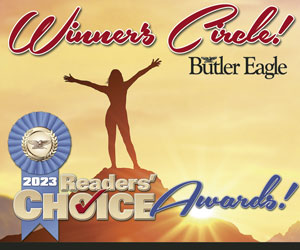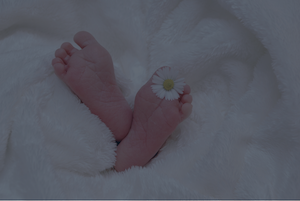The 1920s: Decade of Optimism, Electricity
Welcome to the 1920s, a decade of spirited spending, luminous electric lights and a newfound sense of liberation in the wake of a “war to end all wars.”
For the first time, a majority of Americans lived in towns and cities, “urban” communities of 2,500 or more residents, according to the U.S. Census Bureau. This shift meant greater access to civic and social life, accelerating cultural change and growing commercialization, and workplaces where the incessant hum and smoke of machinery replaced the steady pace of the farmer’s plow.
Many forget that the decade began with an economic slowdown and unemployment as the nation shifted from a wartime to a peacetime economy and made room in the workforce for thousands of returning soldiers.
Yet out of those trials emerged a new, more vibrant chapter in American life. The conflict had sparked social changes and technological innovations that now touched the domestic lives of citizens—lives that, for many but not all, seemed brighter and louder and perhaps more hopeful than ever before.
As Europe was busy rebuilding its infrastructure from the devastation of the Great War, the U.S. economy roared, thanks to global leadership in manufacturing and banking, as well as burgeoning construction and infrastructure projects at home.
All told, the economy grew by 42% over the course of the decade, according to the U.S. Census Bureau, and average household income rose from $3,269 in 1920 to $6,132 in 1929, according to the IRS. That meant more money in the pocket and more money headed back into the economy as Americans splurged on electronic appliances, health and beauty products, and entertainment.
Not everyone enjoyed boom times. In fact, the prosperous economy left many Americans—especially those producing the nation’s food, energy and manufactured goods—in the dust.
A shocking 60% of families were considered poor in the 1920s, earning less than $2,000 a year, according to the Bureau of Labor Statistics. Farmers, African Americans and immigrants were particularly hard-hit.
Still, the surge in personal wealth and spending power led to unprecedented investment. The Dow Jones Industrial Average rose from under 64 points in 1921 to more than 381 points in 1929, according to the Federal Reserve.
But speculative investments, the overuse of credit and inflated values led to a massive sell-off on “Black Thursday,” Oct. 24, 1929—and again on “Black Tuesday,” five days later. The market lost nearly 50% of its value by November, according to the Fed, leading to the financial ruin of millions of Americans.
“E-L-E-C-T-R-I-C-I-T-Y has done more, and is doing more to develop the world than any other force in existence,” an advertisement for the Idaho Power Company declared in a full-page advertisement on Jan. 4, 1920. “It LIGHTENS the LABOR of the HOME” by automating “cooking, washing, ironing, sewing, cleaning, dishwashing, water heating, and many other household duties.”
Vacuum cleaners, electric irons, washing machines and refrigerators were welcomed into Americans’ homes, quickly replacing unloved brooms, irons heated over a fire, knuckle-grating scrub boards and dripping ice boxes.
By the end of the decade, 60% of American homes had a radio, delivering news, entertainment and advertising. Stations were available in all 48 U.S. states by October 1922.
Electricity also sparked innovations in television or “radiovision” technologies, though it would be several decades until “radiomovies” would be seen in a typical American household.
Travel by motorcar from New York to San Francisco in 1920 could take a month or more. It’s fairly reasonable when one considers that the nation’s No. 1 car, the Ford Model T, could travel at a maximum speed of 40 to 45 mph when the roads were paved. And not all of them were.
To be sure, train travel was more efficient, completing the same trip in seven days.
But in 1923, two U.S. Army Air Service pilots completed the first nonstop flight from New York to California, doing so in just under 27 hours.
Aviation would come to embody the ethos of the 1920s, symbolizing freedom, independence and an audacious, technology-fueled search for adventure.
But it was not for the weak of heart.
According to the Smithsonian Air and Space Museum, air travel of the 1920s was noisy and uncomfortable. Without pressurized cabins, most planes flew low and stopped often.
Nevertheless, the efficiency of air travel accelerated its use for commercial purposes and soon for passengers.
The industry created its own celebrities.
In 1922, a daring, 25-year-old Amelia Earhart set her first world record, the first woman to fly at an altitude of 14,000 feet. She became a global icon with transcontinental speed records and pioneering long-distance flights before her disappearance over the Pacific Ocean in 1937.
Another 25-year-old, Charles Lindbergh, was equally famous after he completed the first nonstop flight from New York to Paris in 1927. The former airmail carrier set a new distance record for the 33.5-hour, 3,600-mile trip in his plane, the “Spirit of St. Louis.”
Though “Lucky Lindy” was credited with sparking a “Lindbergh Boom” for the industry, the Smithsonian reports only 6,000 civilian passengers embraced air travel in 1930 … but this was only the beginning.
Generations of teetotalers and other temperance activists, concerned about massive levels of drinking and related social ills, finally prevailed with the 1919 ratification of the 18th Amendment, a measure that would ban the manufacture, sale and transportation of “intoxicating liquors” in the U.S.
Bars and saloons were packed on the evening of Jan. 16, 1920, the night before the measure was to take effect, for one “last call.”
Prohibition, however, did not mean an end to alcoholic consumption.
Resourceful consumers could make their own alcohol, known variably as moonshine, bathtub gin or hooch, or by other monikers. Loopholes in the law also allowed for the use of liquor for medical, religious or industrial purposes, resulting in an increase in medical ailments, religious devotees and missing liquid supplies from industrial facilities.
Meanwhile, officials struggled to enforce the law through raids, seizures and investigations that sometimes involved elaborate disguises to infiltrate production facilities and illicit saloons. Often, low-paid officials were seduced by bribes and looked the other way.
Researchers Jeffrey A. Miron and Jeffrey Zwiebel estimate that by the end of the decade, consumption had declined by about 30% for a dubious victory.
Smelling an opportunity to make barrels of money, organized crime addressed the public demand for liquor by creating intricate manufacturing and distribution networks in cities across the nation.
These “special arrangements” required an enforcement infrastructure—agents to manage territories, intimidate rivals and protect the lucrative trade from law enforcement. This meant threats, extortion and violence.
In New York City alone, more than 1,000 people were killed in mob clashes during Prohibition, according to the New York City archives, and 729 more were killed in Chicago, according to the Chicago Crime Commission.
Notorious Chicago crime boss Al Capone accrued enormous wealth and power through his ruthless Prohibition-era activities, culminating in one of the era’s most infamous events: the St. Valentine’s Day Massacre, on Feb. 14, 1929. In a chilling display of gangland warfare, Capone’s men, reportedly dressed as police, murdered seven unarmed members of a rival gang in a northside garage.
Named after the New York City neighborhood that was a center of African American nightlife and culture, the Harlem Renaissance was an incubator of creative activity that revolutionized the art, literature, music and cultural expression of the entire nation.
“Dream Deferred” poet Langston Hughes was just one of the luminaries who would capture the spirit of the community.
The list is a long and distinguished one: “Their Eyes Were Watching God” author Zora Neale Hurston, Blues singers like Ma Rainey and Bessie Smith, legendary bandleaders and composers like Duke Ellington, internationally acclaimed dancer Josephine Baker, actor Paul Robeson and many more.
From Harlem’s Black-only and integrated venues—highly unusual in the 1920s—their creative energy spilled into the streets, dance halls and living rooms of America. People of all backgrounds were soon dancing the Charleston, the Fox Trot and the Lindy Hop to the rhythms of jazz and swing.
The movie industry became big business in the 1920s. And Hollywood was its epicenter.
The highest-grossing film of the 1920s was MGM’s silent drama “The Big Parade” (1925) starring “The Great Lover” John Gilbert and French actress Renée Adorée. Considered one of the greatest World War I pictures, it earned an incredible $4.99 million in the domestic box office, according to film historian H. Mark Glancy.
In this rich, no-holds-barred era, mega-studios such as Warner Bros. Pictures—founded in 1923 by brothers Jack, Harry, Albert and Sam—signed blockbuster performers such as Douglas Fairbanks and Gloria Swanson for silent movies and, later, talkies.
New York City’s Rivoli Theater hosted the first public “sound on film” screening of movie “shorts” in 1923. Four years later, “The Jazz Singer” would be the first feature-length film with sound and marked the beginning of the end for silent films.
Not all of the silent era’s stars survived the transition to talkies, which required a different set of acting skills and vocal cords. Such was the case for cinematic giants such as Pola Negri, Lillian Gish and Gilbert—names that many may not recognize today.
Others made the move quite well, including booming-voiced John Barrymore, who had enjoyed a distinguished career on un-microphoned stages; comedians Stan Laurel and Oliver Hardy, whose signature line, “Here’s another fine mess!” became the stuff of legend; and, later, Swedish actor Greta Garbo, whose husky voice would cause a sensation with headlines such as “Garbo speaks!”
In an era when popular culture dispensed with traditional values and constraint, the movies of the 1920s featured content some considered immoral: nudity, violence, profanity, suggestive dialogue and images, and implied interracial and homosexual relationships.
Female actors, reflecting the “flapper” persona in appearance and behavior, donned revealing clothing and suggestive behaviors. “It Girl” Clara Bow and the enigmatic Louise Brooks, with her trademark pageboy bob, flaunted traditional standards of beauty to become powerful sex symbols and box office draws.
To avoid offending audiences, studios adopted the Motion Picture Production Code, which attempted to ban these and other elements, in 1930. The code was in effect until 1968, when the modern ratings system was adopted.
It was indeed an exciting time to be a woman in the 1920s. The “New Woman” of the 1920s—even those off the big screen—had lots to celebrate.
While women’s working wages were lower than men’s, more women were in the workforce, going to college and driving cars. The new sense of independence and a rise in female consumerism heightened their autonomy—and their expectations.
Women made their mark on politics following the ratification of the 19th Amendment in 1920. Voting for the first time in that year’s presidential election, they delivered a landslide victory for Ohio newspaper publisher and senator Warren G. Harding.
One of the best ways to demonstrate one’s liberation and empowerment was to light a cigarette—at least according to public relations pioneer Edward Bernays. On behalf of his American Tobacco Company client, Bernays orchestrated the “Torches of Freedom” campaign of 1929. Most notably, he arranged for 10 women to march down Fifth Avenue—cigarettes in hand—in a bold and symbolic display in New York’s Easter Day Parade.
Another smoker, George Herman Ruth Jr., more commonly known as “Babe,” became a different type of symbol and he single-handedly reshaped America’s national pastime.
The slugger was baseball’s dominant player in 1919 when he asked his Boston Red Sox owners for a raise. Unwilling or unable to meet Ruth’s salary demands, the team traded the 25-year-old phenom to the New York Yankees in January 1920.
Now in pinstripes, Ruth set towering records in his first season, hitting 54 home runs with an unbelievable .847 slugging average. Other records came in runs scored (158), RBIs (137) and more. Sports aficionados point out that Ruth individually “out-homered” every other team in the league in his first Big Apple year of 1920—and would do so at least one more time before the decade’s end.
He broke many of his own records in 1921. Before the decade was out, the Babe would lead the Yankees to six American League pennants and three World Series wins, in 1923, 1927 and 1928.
Meanwhile, the Boston club and generations of its fans would regret the fateful 1920 trade. After winning three titles with Ruth in the 1910s, the Red Sox would not win another World Series until 2004—a legendary misfortune known as “The Curse of the Bambino.”
Katrina Jesick Quinn is a faculty member at Slippery Rock University. She is an editor of “From the Arctic to the Orient: Adventure Journalism in the Gilded Age” (McFarland) and “The Civil War Soldier and the Press” (Routledge).













